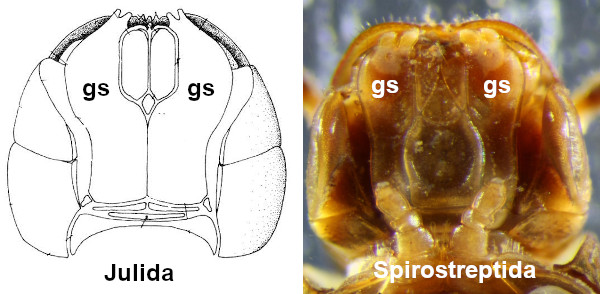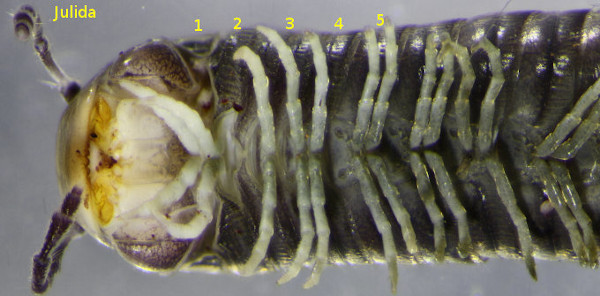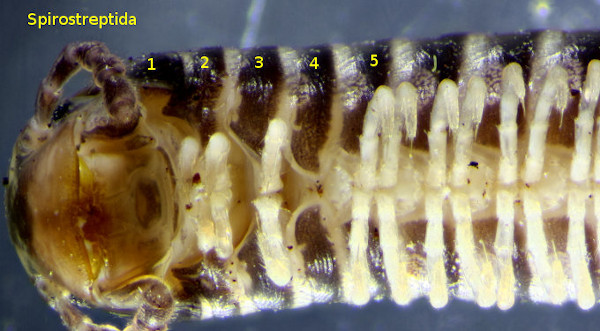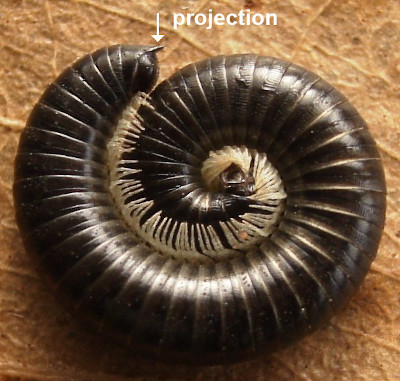Juliforms
Most people instantly recognise juliforms as millipedes. They are long, smooth-bodied and cylindrical, and mostly gray or black in colour. They can be found in every garden; some species invade houses. Almost all of these domestic juliforms are introduced species in the order Julida. Tasmania also has a number of species of native, bush-living juliforms in the order Spirostreptida.
Identification would be easier if the two orders stayed apart, but unfortunately they don't. Introduced julidans are now well established in the bush in many parts of the State (including wild, remote areas) and native spirostreptidans are at home in the backyard woodpile. Also unfortunately, there is no simple way for non-experts to separate Julida from Spirostreptida, especially the smaller species.
The most reliable way to distinguish Julida from Spirostreptida is to look closely at the underside of the head. The lateral plates (gnathochilarial stipetes, singular stipes, gs) meet broadly along the midline towards the back of the head in Julida, but are well-separated in Spirostreptida:

Another reliable difference is that Julida have 2 pairs of legs on ring 4 and Spirostreptida have none: the ring 4 legs are missing:


A third method is to look closely at the "tail" of the millipede. If the tail has a small, pointed projection, the millipede is an introduced julidan. If the tail has no projection, the millipede may be a native spirostreptidan.

If you are still unsure, try working through the Spirostreptida pages and the Julida section of the invasives page to see if you can find a match to your specimen.
